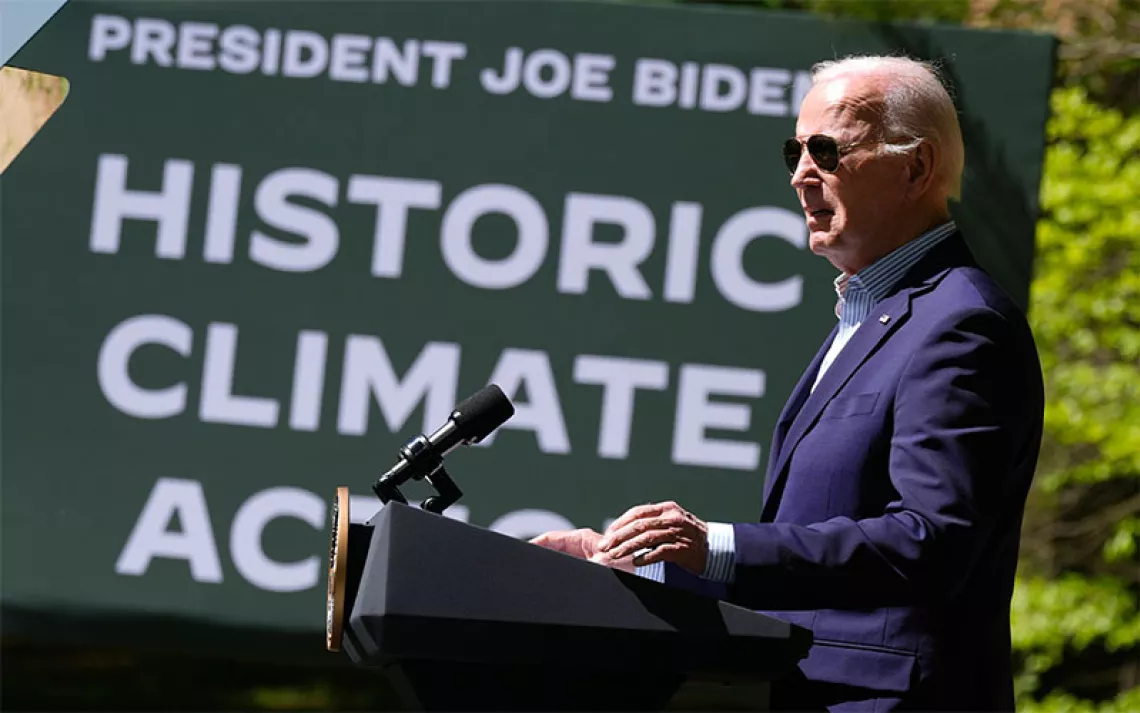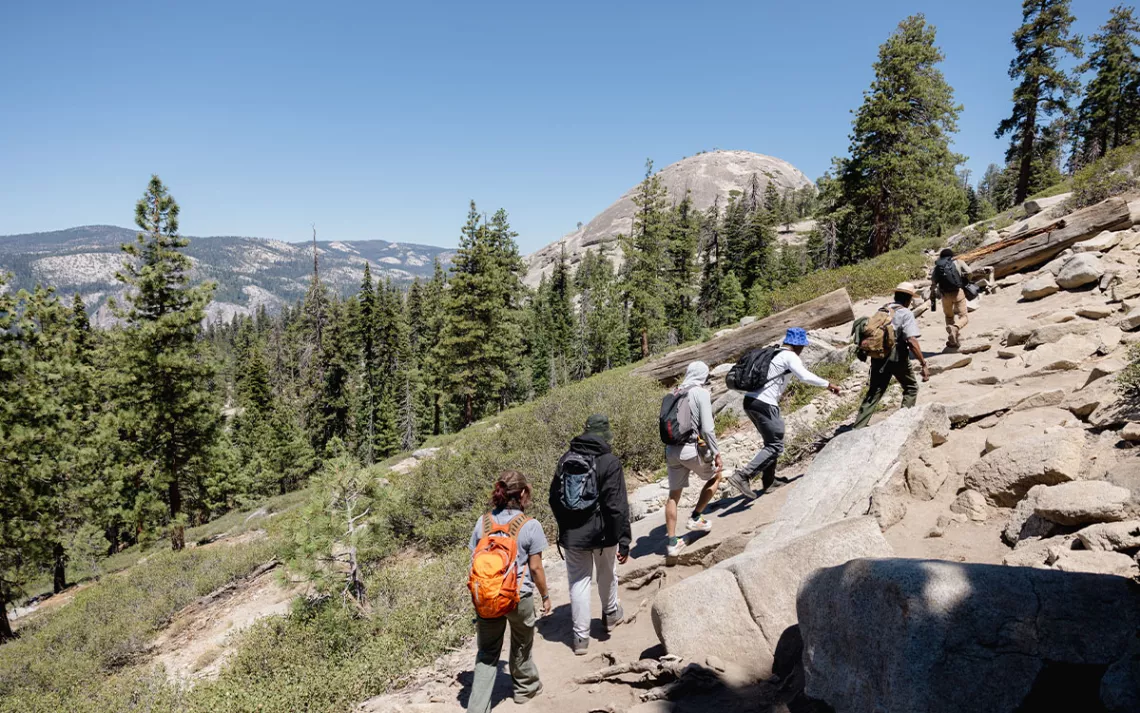Why Did Trump Pardon Two Arsonist Ranchers?
The strange saga of Dwight and Steven Hammond
On Tuesday, President Trump pardoned Dwight L. Hammond and his son, Steven D. Hammond—two ranchers that very few Americans had ever heard of.
“The Hammonds are multigeneration cattle ranchers in Oregon imprisoned in connection with a fire that leaked onto a small portion of neighboring public grazing land,” Sarah Huckabee Sanders, the White House press secretary, wrote in a statement. A district court sentenced Dwight to serve three months in prison, and Steven to a year and a day, but the Obama administration filed an appeal, pointing out that there’s a federal minimum sentence for arson, and it’s five years. That’s what the Hammonds wound up serving when they were pardoned.
None of this answered the question of why, out of the 1.5 million people currently incarcerated in state and federal prison, Trump would pick the Hammonds to pardon. It’s not like there was a groundswell of popular opinion in favor of freeing them—if public-lands-hating ranchers were musical acts, the Hammonds would be an obscure indie band with an obsessive fan base.
A petition started on Whitehouse.gov last May got 8,566 signatures—nowhere near the 100,000 needed to even get a response to your petition from the White House. The Trump administration also shows no signs of acceding to the requests of even more popular Whitehouse.gov petitions (“Divest or put in a blind trust all of the President's business and financial assets” had 360,299, and “Do Not Repeal Net Neutrality” had 274,905). But on Wednesday, they were flying home from minimum-security prison in a private jet owned by oil magnate Forrest Lucas.
So why the Hammonds? Here are a few possibilities:
Trump pardoned the Hammonds because he couldn’t pardon any Bundys.
No one is a bigger fan of Dwight and Steven Hammond than Ammon and Ryan Bundy, who claimed that their whole inspiration for carrying out an armed takeover of Malheur National Wildlife Refuge, a popular Oregon bird-watching site, was the injustice of the Hammonds having to serve the federal minimum sentence for arson.
The Hammonds did not return the favor and refused to endorse the Malheur takeover. The Bundys meanwhile became famous enough to have a whole podcast miniseries about them, while the Hammonds remained—to get all Bette Midler about it—the wind beneath their wings.
To a president whose environmental platform so far has largely consisted of smoothing the path for private individuals to exploit land that belongs to the public, pardoning the Bundys would have been the perfect troll maneuver, in much the same way that pardoning former sheriff Joe Arpaio trolls anyone who thinks that officers of the law should be held accountable to the same laws they are supposed to enforce.
But as it is, the Bundys weren’t available to be pardoned: charges against them and their father, Cliven, were dismissed in January of this year after the judge on their case declared a mistrial. The Hammonds may have just been the next best thing.
No one at the White House thinks death threats to Fish & Wildlife Service employees is a big deal.
An article written about the Hammonds in High Country News back in 1994 describes Malheur officials as already in possession of a “thick file” about the Hammonds, who were allowed to drive their cattle through the refuge on their way to BLM lands to the north, as long as they gave Malheur advance notice.
Not only did the Hammonds not give notice, they also sometimes let their cows wander around in the refuge for days, trampling on habitat restoration projects and wandering into irrigation canals. When Malheur officials told the Hammonds to cut it out, Dwight Hammond didn’t take it well. “Hammond allegedly made death threats against previous managers in 1986 and 1988 and against Cameron, the current manager, in 1991 and again this year,” wrote High Country News.
In 1994, the Hammonds lost the right to graze cattle and grow hay to the north of the refuge, and Malheur decided to build a fence along the refuge boundary to keep the Hammonds' cows out. The article described what happened later that year:
The events of Aug. 3 are outlined in the sworn affidavit of special agent Earl M. Kisler, who assisted in the Hammonds' arrest. On the day the fence was to be built, the crew and refuge officials arrived to find Hammond had parked his Caterpillar scraper squarely on the boundary line and disabled it, removing the battery and draining fuel lines. When a tow truck arrived to move it, Dwight Hammond showed up, leaped to the controls of the scraper and hit a lever that lowered the bucket, narrowly missing another special agent. Meanwhile, said Kisler, Steve Hammond shouted obscenities at federal officials.
Both Hammonds were arrested and released two days later without having to post bail. By the time they emerged, their case had attracted the attention of the American Land Rights Association, which argued that the Hammonds were victims of government overreach. Representative Bob Smith, an Oregon Republican, wrote a letter to then–Interior Secretary Bruce Babbitt arguing that arresting the Hammonds had caused Smith’s constituents “to lose faith in their government.” Shortly thereafter, the U.S. attorney's office in Portland reduced the charges against the Hammonds from felonies to misdemeanors and postponed the hearing on those charges indefinitely.
Trump has no idea just how much the Hammonds were into starting fires.
Dwight and Steven Hammond did more than just start a few fires that got a little out of hand. The indictment filed against them in 2012 says that as early as 1999 the Hammonds were already being warned by the BLM district manager about starting fires that drifted into BLM territory.
In 2001, a hunting party passing through the area saw a group that included the Hammonds shoot into a herd of seven or eight deer on BLM land—a move that, given the hunting laws in southwest Oregon, was immediately obvious as poaching. “I saw at least four bucks get hit by bullets,” hunting guide Gordon Choate said at the trial. “I saw one with a leg flopping, running. And basically the herd of bucks just exploded like a flock of quail.” The Hammonds moved on and didn’t try to kill the wounded deer, which further unnerved Choate and the other hunters.
When they realized Choate had spotted them, Steven’s then-13-year-old nephew, Dusty, told federal investigators that Steven passed out matches to the hunting party and told them to walk through the grass, lighting and throwing them to the ground. Dusty, an inexperienced arsonist, accidentally set fire to the grass on all sides of where he was standing, and had to seek shelter in a creek until the wildfire blew over.
In the distance, Choate’s hunting camp looked up and saw a wildfire advancing. The Hammonds had made no effort to warn them. The group hurriedly evacuated, leaving all of their equipment behind. By the time the fire was extinguished, it had burned 139 acres of public land.
Or Trump just really likes fires.
In 2005, Dwight Hammond blocked BLM firefighters from crossing through his ranch on the way to wildfires, and Steven Hammond started a fire that hopped a fence and set fire to the private ranch next door. He asked the local sheriff if he could file a complaint against any BLM firefighters who set foot on his property, but also confided in a local BLM range management specialist that he and Dwight had been setting fires in the area “for years” to keep juniper trees from taking up water that could go into growing more grass.
In 2006, a group of BLM firefighters had to pack up their camp at night and evacuate after three fires suddenly appeared downhill from their camp. Steven Hammond admitted to setting the fires, and told a group of nearby firefighters that they should “just clear out.” That same day, two BLM officials caught Dwight Hammond near another suspicious fire. When they tried to drive away after confronting Dwight, another fire started in the area where they had left Dwight behind that nearly boxed them in.
These are only a handful of the fires mentioned in the indictment—it requires real endurance to read through the entire list.
Or Trump is holding to an unconventional interpretation of the phrase “family man.”
Wrote Huckabee Sanders in her statement: “The Hammonds are devoted family men, respected contributors to their local community, and have widespread support from their neighbors, local law enforcement, and farmers and ranchers across the West.”
Setting aside the part where the Trump administration has separated family men (and women) from their children for far more minor actions than arson, it’s still clear that this pardon will be reuniting a strange kind of family. When the Hammonds' lawyers introduced a similar “family man” argument during their resentencing trial, the prosecution’s response was a sheriff’s report written after an employee at the local high school reported that Steven’s now-16-year-old nephew, Dusty, had some strange injuries.
Dusty told the sheriff that, in a fit of teenage experimentation, he had scratched some letters into his chest with a paperclip. When Steven Hammond found out, he held his nephew down and sanded the scratches off with sandpaper, all the while threatening to get a knife and fillet them out if the sandpaper didn’t work.
When the sheriff questioned Steven Hammond about this, Hammond said that Dusty was lucky that he was not at the ranch, because “Dusty would have wished he wasn’t alive.” The sheriff explained to the Hammonds that the state of Oregon was leading the investigation of child abuse, not Dusty. Steven Hammond told the sheriff that he did not agree with the government getting involved in family matters. The investigation appears to have ended there.
But five years later, when federal agents showed up at Dusty’s house and asked him about his uncle, he was ready to talk. He was done, he later said in court, with being afraid.
 The Magazine of The Sierra Club
The Magazine of The Sierra Club




